Are you thinking about adding a tree frog to your family? With choices like the Green Tree Frog, Red-Eyed Tree Frog, Black-Eyed Tree Frog, White Tree Frog, and Gray Tree Frog, finding the perfect pet can feel overwhelming. In this guide, I’ll help you compare these popular options and share insights on which tree frog might be the best fit for most pet owners. Together, we’ll explore what makes each type unique and how to choose the one that will thrive in your home.
Green Tree Frog
The Green Tree Frog is a popular choice, known for its vibrant color and friendly temperament. These frogs thrive in environments with moderate humidity and are easy to care for, making them ideal for beginners.
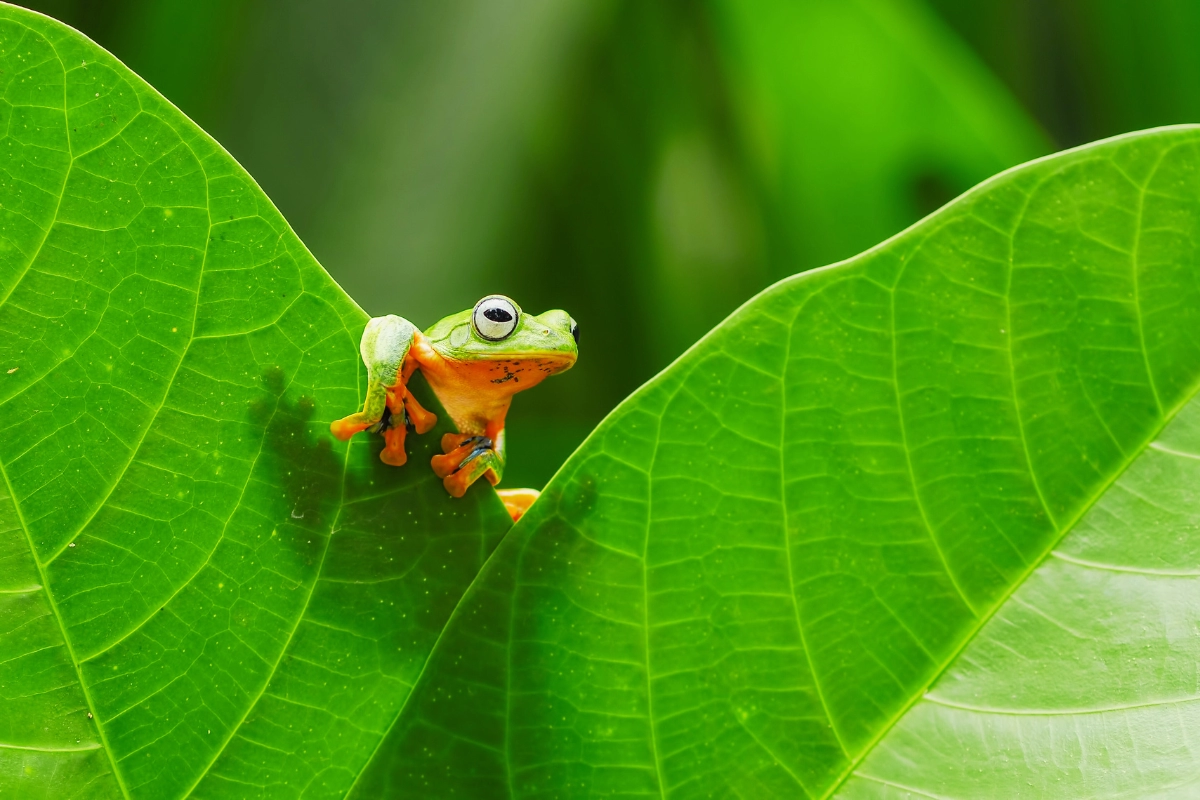
- Size: 2-3 inches
- Lifespan: 5-10 years
- Diet: Insects
- Humidity Needs: Moderate
Pros:
- Adaptable to various environments
- Generally low-maintenance
- Friendly and calm disposition
- Good for beginners
Cons:
- Sensitive to extreme humidity levels
- Prefers a quieter environment
Red-Eyed Tree Frog
The Red-Eyed Tree Frog stands out for its bright red eyes and striking colors, offering a beautiful visual experience for any pet enthusiast. Native to rainforests, it requires a high-humidity habitat to thrive.
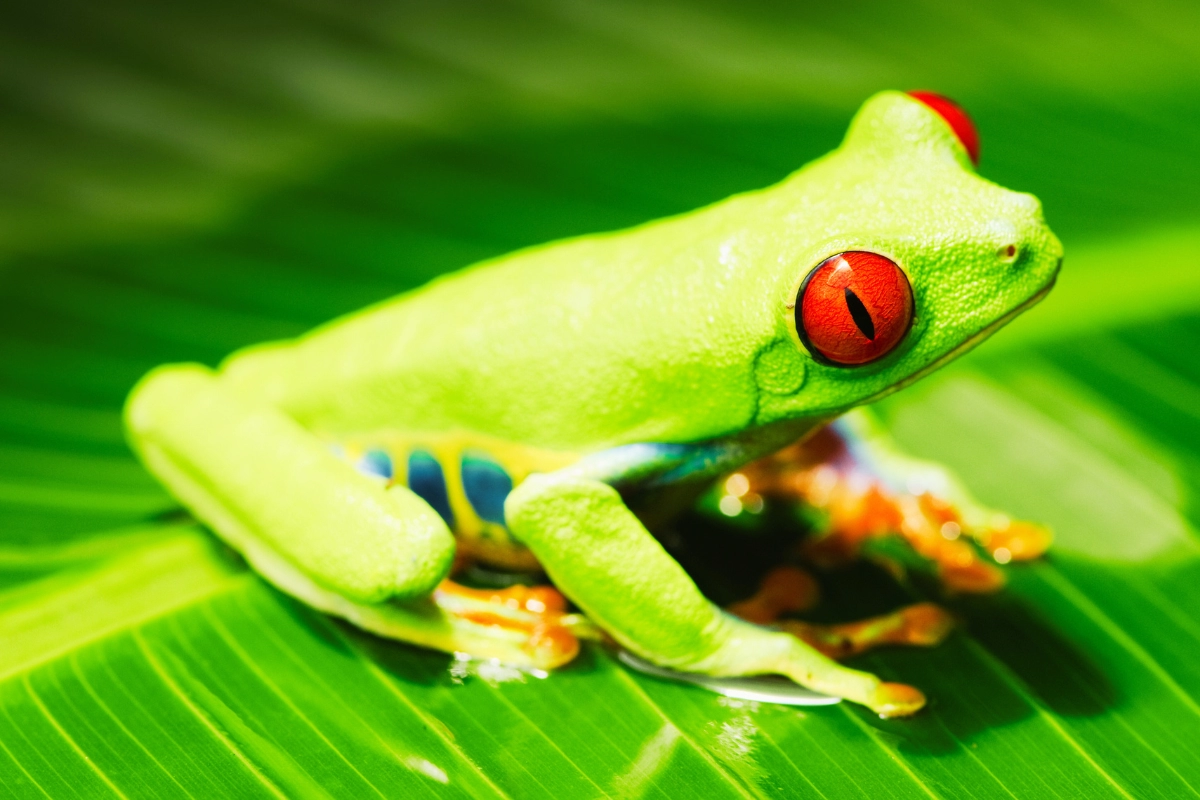
- Size: 1.5-2 inches
- Lifespan: 5 years
- Diet: Insects
- Humidity Needs: High
Pros:
- Eye-catching appearance
- Engaging, active behavior
- Small and easy to handle
- Great for display setups
Cons:
- Requires high humidity maintenance
- Active at night, less visible during the day
Black-Eyed Tree Frog
Black-Eyed Tree Frogs are known for their unique eye color and hardy nature, making them adaptable to various environments. They are slightly more active than Green Tree Frogs and appreciate a more dynamic enclosure.
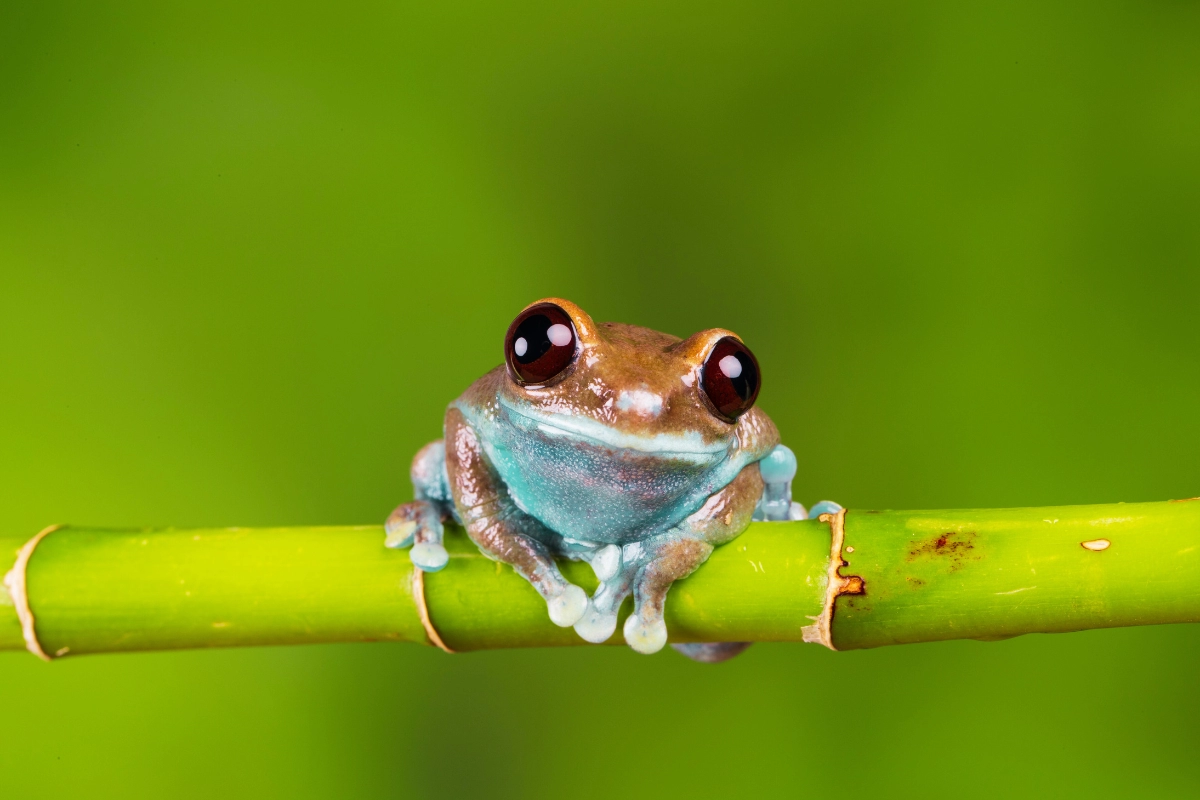
- Size: 1.5-2.5 inches
- Lifespan: 8 years
- Diet: Insects
- Humidity Needs: Moderate to high
Pros:
- Hardy and adaptable
- Interesting eye color and appearance
- Moderate care requirements
- Suitable for intermediate caretakers
Cons:
- May be a bit shy initially
- Requires occasional higher humidity adjustments
White Tree Frog
White Tree Frogs are beloved for their docile nature and ability to tolerate a wider range of environmental conditions. Often recommended for beginners, they are known to be hardy and forgiving of minor care mistakes.(whites tree frog care please view https://goliath-frog.com/white-tree-frog-care-101/)
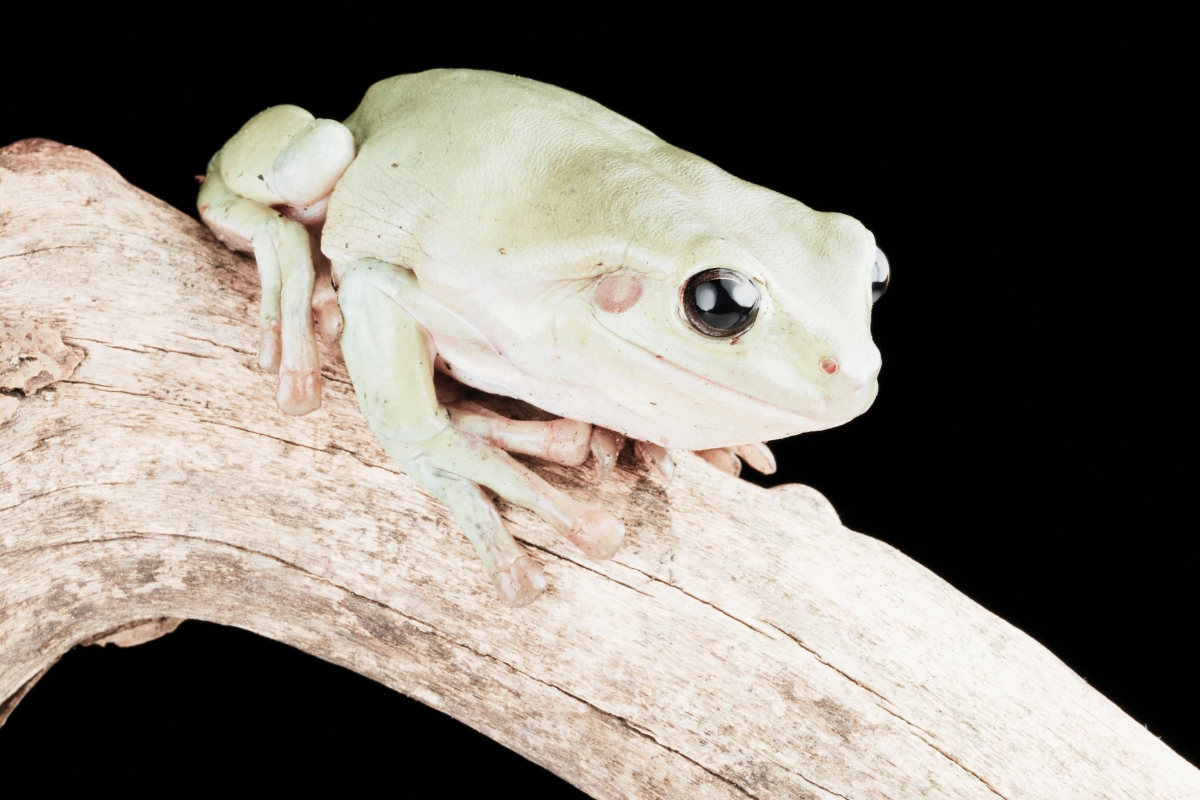
- Size: 3-4 inches
- Lifespan: 10-15 years
- Diet: Insects
- Humidity Needs: Moderate
Pros:
- Very forgiving and easy to care for
- Calm, even-tempered
- Tolerates a variety of setups
- Great for beginners and children
Cons:
- Prone to obesity if overfed
- Can be less active than other species
Gray Tree Frog
Gray Tree Frogs are adaptable and well-suited to a range of temperatures and humidity levels. Known for their ability to change colors, they’re fascinating to watch and make a unique pet for intermediate keepers.
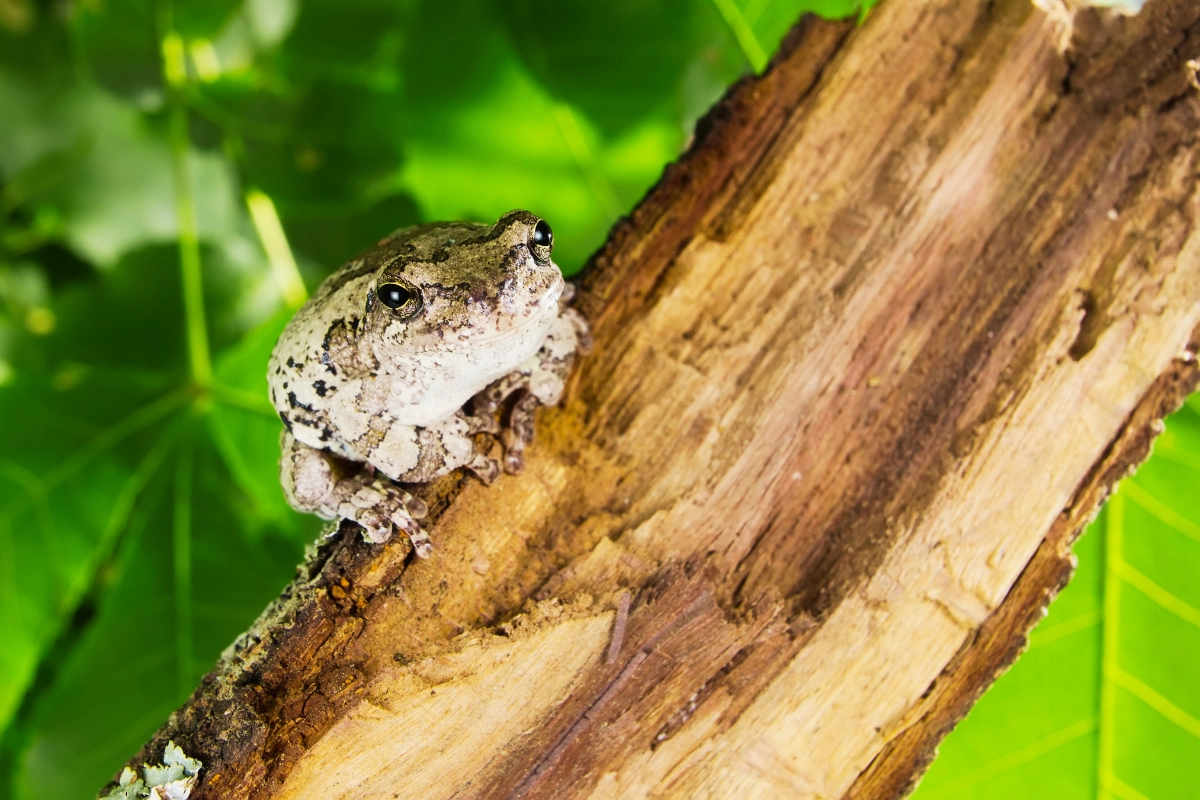
- Size: 1.5-2 inches
- Lifespan: 7-9 years
- Diet: Insects
- Humidity Needs: Moderate
Pros:
- Color-changing ability adds interest
- Resilient and adaptable
- Moderate care requirements
- Perfect for varied enclosures
Cons:
- May be more reserved than others
- Requires slightly more complex habitat setup
Appearance and Coloration
Each tree frog brings a unique visual appeal, making them attractive additions to any collection:
- Red-Eyed Tree Frog: Known for its bright red eyes and vivid green body, the Red-Eyed Tree Frog is one of the most iconic species in the pet trade. Its vibrant colors create a striking contrast, especially with its blue and yellow side stripes, making it a favorite for those who appreciate bold, exotic aesthetics.
- Green Tree Frog: The Green Tree Frog boasts a classic, deep green color that symbolizes the species and blends well in a variety of naturalistic enclosures. Its smooth, glossy skin adds to its appeal, and occasional variations in shade, from light to dark green, make it visually engaging.
- Black-Eyed Tree Frog: This species stands out with its distinctive dark eyes, giving it a unique expression. Its body typically varies from shades of green to brown, allowing it to blend well into leafy environments while still offering a unique look due to its eye coloration.
- White Tree Frog: Often referred to as the “Dumpy Tree Frog,” the White Tree Frog has a calm green to bluish tone, often with a slightly pudgy appearance. Some specimens even exhibit small white spots, giving them a “starry” look, adding charm and making them popular among pet owners.
- Gray Tree Frog: This species is particularly fascinating due to its ability to change colors, ranging from gray to green, depending on its surroundings and mood. This color-shifting ability adds a dynamic visual interest, and the marbled pattern on its skin makes it look quite distinctive.
Winner: Red-Eyed Tree Frog – With its iconic red eyes and striking color contrasts, the Red-Eyed Tree Frog takes the lead in appearance, making it the most visually captivating option among tree frogs.
Temperament and Handling
Each tree frog species has its own temperament, impacting how it interacts with its environment and its comfort level with handling:
- Red-Eyed Tree Frog: This species is active and alert, especially at night. Although beautiful to observe, Red-Eyed Tree Frogs tend to be sensitive to handling and prefer minimal direct interaction. They’re better suited for display rather than frequent handling, as they can become stressed easily.
- Green Tree Frog: Known for its relatively calm nature, the Green Tree Frog can tolerate occasional handling, though it’s generally more comfortable being left in its enclosure. Its temperament makes it easygoing, but it’s best handled sparingly to prevent stress.
- Black-Eyed Tree Frog: Black-Eyed Tree Frogs are shy by nature and may initially be reserved around humans. While they can adjust to minimal handling over time, they are typically more comfortable in an enclosure without much interaction, making them better suited for observation.
- White Tree Frog: The White Tree Frog is famously docile and resilient, often comfortable with gentle handling. It tolerates human interaction well and can even seem curious and calm in the hands of a careful handler. This forgiving nature makes it a fantastic choice for beginners and families with children.
- Gray Tree Frog: Gray Tree Frogs are slightly more reserved and prefer minimal handling. They are best left to explore their enclosure and show a more independent temperament. While beautiful to observe, they can be a bit skittish, so handling should be kept to a minimum to avoid stress.
Winner: White Tree Frog – With its calm and forgiving temperament, the White Tree Frog stands out as the most handler-friendly option. Its gentle nature makes it ideal for first-time pet owners and families looking for a low-maintenance and interactive pet experience.
Care Requirements
Tree frogs have specific habitat needs that vary by species, making some easier to care for than others based on humidity, temperature, and general maintenance:
- Red-Eyed Tree Frog: Red-Eyed Tree Frogs require a warm, humid environment to thrive, with humidity levels ideally kept around 80% and temperatures between 75-85°F during the day, dropping slightly at night. Their high humidity requirements mean daily misting or an automatic misting system is essential, making them better suited for more experienced keepers who can manage consistent humidity levels.
- Green Tree Frog: Green Tree Frogs are relatively adaptable and have moderate care needs. They do well with humidity levels around 50-60% and temperatures between 70-80°F, making them easy to maintain in a standard home environment. Occasional misting and a well-ventilated tank are usually enough, making this species an excellent choice for beginners who may not want to invest in complex setups.
- Black-Eyed Tree Frog: Black-Eyed Tree Frogs thrive in moderate to high humidity levels, ideally around 60-70%, and temperatures between 75-80°F. They require a bit more humidity than Green Tree Frogs, but their needs are still manageable with routine misting and a stable enclosure setup.
- White Tree Frog: White Tree Frogs are hardy and can tolerate a broader range of environmental conditions than other species, with humidity levels of around 50-60% and temperatures between 70-80°F. They’re also forgiving of occasional care lapses, making them a great choice for busy owners or those newer to amphibian care.
- Gray Tree Frog: Gray Tree Frogs are resilient and adaptable, with moderate humidity needs of about 50-70% and temperatures between 65-75°F. They can tolerate slight temperature fluctuations, making them suitable for owners who may live in cooler climates or prefer a low-maintenance setup.
Winner: Green Tree Frog – With its adaptable and low-maintenance care requirements, the Green Tree Frog is well-suited for beginners and those who prefer a simpler care routine. Its moderate humidity and temperature needs make it easy to manage in a typical home environment without specialized equipment.
Activity Level
Each tree frog species has distinct activity patterns that influence how engaging they are to observe in their enclosure:
- Red-Eyed Tree Frog: As a nocturnal species, the Red-Eyed Tree Frog is highly active at night, often exploring and climbing around its enclosure. Its vibrant color and curious behavior make it particularly engaging to watch in the evening hours, perfect for pet owners who enjoy lively, active displays.
- Green Tree Frog: Green Tree Frogs are more laid-back and less active than Red-Eyed Tree Frogs, though they may exhibit mild activity in the evening. They’re known for spending much of their time resting on leaves or surfaces, which can be relaxing to observe but may lack the same level of interaction as more active species.
- Black-Eyed Tree Frog: The Black-Eyed Tree Frog tends to be reserved and less visibly active, making it more suitable for owners who prefer a quieter pet. It does have bursts of activity but generally spends much of its time stationary or resting.
- White Tree Frog: White Tree Frogs have a calm and even-tempered demeanor, which can make them appear less active. Though they may move around occasionally, they spend much of their time perched or resting, which is ideal for pet owners who prefer a mellow, low-energy companion.
- Gray Tree Frog: Gray Tree Frogs are also moderately active, particularly at dusk and dawn, though not to the same extent as Red-Eyed Tree Frogs. Their color-changing ability adds an interesting visual element even when they’re less active, but they tend to stay relatively calm throughout the day.
Winner: Red-Eyed Tree Frog – With its engaging, nocturnal activity, the Red-Eyed Tree Frog stands out for pet owners who enjoy watching their frogs explore and interact with their surroundings. Its lively nature adds a dynamic presence to any enclosure, making it the top choice for those looking for an active and visually stimulating pet.
Lifespan
The average lifespan of each tree frog species varies, with some living significantly longer than others. This can be an important consideration for pet owners looking for a long-term companion:
- Red-Eyed Tree Frog: With an average lifespan of around 5 years, the Red-Eyed Tree Frog offers a moderate commitment. Its lifespan can reach up to 8 years with excellent care, though it typically does not live as long as other species, making it suitable for owners who prefer a shorter commitment.
- Green Tree Frog: The Green Tree Frog has a lifespan of 5-10 years, providing a good balance for pet owners looking for a moderate-term pet. With the right care and environment, some Green Tree Frogs may live even longer, making them a great option for those seeking a pet that will be with them for several years.
- Black-Eyed Tree Frog: Black-Eyed Tree Frogs generally live around 8 years on average, offering a stable, moderate lifespan. They may reach up to 10 years with attentive care, providing a satisfying yet manageable duration for dedicated owners.
- White Tree Frog: Known for its longevity, the White Tree Frog can live between 10 to 15 years, with some individuals even surpassing this range under ideal conditions. Its longer lifespan makes it an excellent choice for those seeking a long-term companion and willing to commit to extended care.
- Gray Tree Frog: Gray Tree Frogs typically live between 7-9 years, a moderately long lifespan that makes them suitable for pet owners who prefer a longer-term pet but not as lengthy as the White Tree Frog.
Winner: White Tree Frog – With a potential lifespan of up to 15 years, the White Tree Frog is the ideal choice for pet owners looking for a long-term companion. Its longevity offers a rewarding experience for those dedicated to providing care over many years, making it the top choice for a lasting pet relationship.
Size and Space Requirements
Each tree frog species has different size and space needs, which can impact the type and size of the enclosure required:
- Red-Eyed Tree Frog: This species is relatively small, reaching around 1.5-2 inches in length. Due to their smaller size, Red-Eyed Tree Frogs require a compact enclosure but still benefit from vertical space for climbing. A 10-gallon vertical tank can comfortably house a single Red-Eyed Tree Frog, making them a suitable choice for those with limited space.
- Green Tree Frog: Green Tree Frogs are slightly larger, generally around 2-3 inches in length. They require moderate space with room to climb and perch. A 15-gallon tank can house a pair comfortably, making this frog manageable in small to moderate-sized enclosures.
- Black-Eyed Tree Frog: Similar in size to the Green Tree Frog, Black-Eyed Tree Frogs reach about 1.5-2.5 inches. They thrive in modest enclosures that provide both vertical climbing opportunities and hiding spots. A 10-15 gallon tank is sufficient for one or two frogs.
- White Tree Frog: White Tree Frogs are the largest of these species, reaching 3-4 inches in length. Due to their larger size, they require a more spacious enclosure, typically around 20 gallons or more for a pair, with both floor and vertical space. This species may not be ideal for owners with very limited space.
- Gray Tree Frog: Gray Tree Frogs are compact, reaching only 1.5-2 inches in length. They adapt well to smaller enclosures and are comfortable in a 10-gallon tank with some vertical space. Their small size and flexibility make them highly suitable for owners with space constraints.
Winner: Gray Tree Frog – With its compact size and adaptability, the Gray Tree Frog is an ideal choice for pet owners who have limited space but still want an active and visually appealing pet. Its small size allows it to thrive in a smaller, well-structured enclosure, making it the most space-efficient option.
Uniqueness Factor
Each tree frog species brings something special, making them stand out with unique qualities and captivating features:
- Red-Eyed Tree Frog: Known for its vibrant red eyes, this species is one of the most visually iconic tree frogs. Its bright colors and distinctive eye markings make it an instantly recognizable pet, often associated with tropical rainforests and exotic habitats.
- Green Tree Frog: The Green Tree Frog is beloved for its classic green color and approachable nature. While it doesn’t have the same eye-catching traits as some other species, its simplicity and calm demeanor make it a familiar and beloved choice for pet owners.
- Black-Eyed Tree Frog: This frog’s standout feature is its striking black eyes, which set it apart from other tree frogs. The dark eyes add a mysterious quality to its appearance, giving it a unique look that appeals to those who want a frog with an unusual yet subtle feature.
- White Tree Frog: Often called the “Dumpy Tree Frog” due to its pudgy appearance, this species has a unique charm and can even develop white spots, which add a “starry” look to its body. Its docile and almost curious nature makes it endearing and memorable.
- Gray Tree Frog: The Gray Tree Frog has a fascinating ability to change colors, shifting between gray and green depending on its environment and mood. This color-changing ability makes it particularly intriguing to observe, as it adds a dynamic and interactive element to its appearance.
Winner: Gray Tree Frog – With its unique color-changing ability, the Gray Tree Frog stands out as the most captivating option. Its chameleon-like quality adds an extra layer of fascination, making it a visually dynamic pet that keeps owners engaged and intrigued.
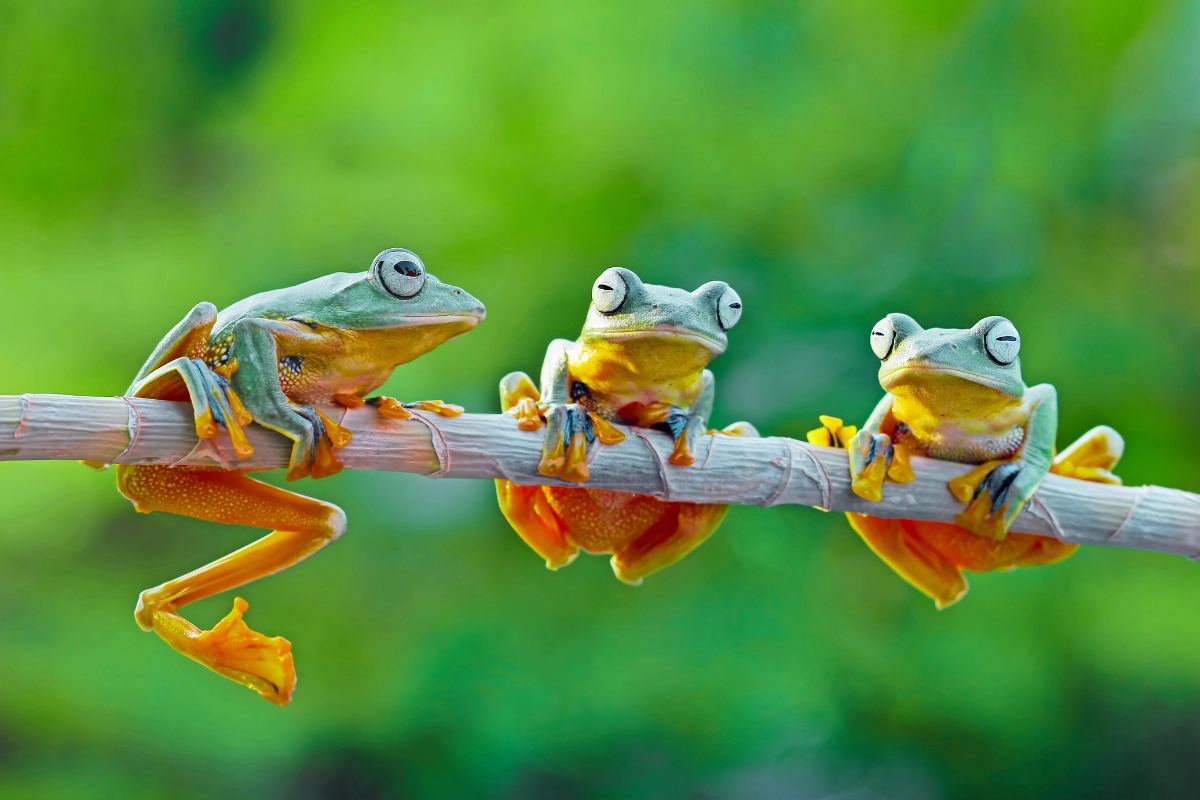
Outstanding Features
- Red Eyes (Red-Eyed Tree Frog)
The Red-Eyed Tree Frog’s vibrant red eyes are iconic and give it an exotic, tropical appearance. This feature not only adds visual appeal but also makes it a favorite for those seeking a visually striking pet. - Color-Changing Ability (Gray Tree Frog)
The Gray Tree Frog can shift colors between gray and green, adapting to its environment or mood. This chameleon-like trait adds a fascinating and interactive quality, making it especially captivating to watch. - Pudgy Appearance (White Tree Frog)
Often called the “Dumpy Tree Frog,” the White Tree Frog has a distinctive, chunky body that adds to its charm. This unique look, combined with occasional white spots resembling stars, makes it especially endearing. - Striking Black Eyes (Black-Eyed Tree Frog)
The Black-Eyed Tree Frog’s deep, dark eyes create a mysterious, unique look that sets it apart from other species. This feature is subtle yet captivating for owners who appreciate distinctive eye colors. - Adaptable Temperament (Green Tree Frog)
Known for its low-maintenance care needs and adaptable nature, the Green Tree Frog is especially well-suited for beginners. Its calm temperament and ability to thrive in various conditions make it a reliable and resilient choice. - Long Lifespan (White Tree Frog)
With a potential lifespan of up to 15 years, the White Tree Frog offers a long-term companionship option for dedicated owners. This longevity makes it a rewarding pet for those looking to commit to frog care over many years.
Each of these unique features enhances the appeal of the respective species, providing prospective pet owners with compelling reasons to consider each frog based on their individual qualities.
Conclusion
If you’re considering the White Tree Frog or Green Tree Frog, you’ll find them to be hardy, low-maintenance companions ideal for beginners and families. Their calm temperaments and adaptability make them great long-term pets, especially for those new to tree frogs.
If you’re drawn to unique visuals and activity, the Red-Eyed Tree Frog or Gray Tree Frog could be perfect. The Red-Eyed Tree Frog’s lively nighttime behavior and the Gray Tree Frog’s color-changing ability offer a fascinating display for more experienced owners ready to meet their specific care needs. Each of these tree frogs brings something special, ensuring there’s a perfect fit for every type of pet owner.
FAQ
What is the best tree frog for a pet?
The White Tree Frog is often considered the best choice for beginners due to its hardy nature, calm temperament, and low-maintenance care needs. The Green Tree Frog is also popular for its adaptability and ease of care.
Why is my green tree frog not eating?
There could be several reasons, such as stress, improper temperature or humidity, or illness. Ensure the enclosure conditions are correct and that it has a variety of food options. If the issue persists, consult a vet experienced with amphibians.
Are red-eyed tree frogs noisy?
Yes, Red-Eyed Tree Frogs can be quite vocal, especially at night. They produce a variety of calls, which some owners find charming, while others may find them disruptive.
Are red-eyed tree frogs shy?
Red-Eyed Tree Frogs can be shy and may hide during the day. They are nocturnal and tend to be more active and engaging at night, but they generally prefer minimal handling.
How big are black-eyed tree frogs?
Black-Eyed Tree Frogs typically grow to around 1.5-2.5 inches in length, making them a moderately sized species compared to other tree frogs.
Can you keep just one white tree frog?
Yes, White Tree Frogs are solitary and do well on their own. However, they can also be housed with others of their species as long as the enclosure provides ample space.
How rare is a gray frog?
Gray Tree Frogs are not particularly rare in the pet trade and are commonly available. However, their unique color-changing ability makes them a fascinating and sought-after choice among tree frog enthusiasts.
